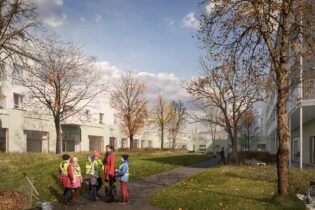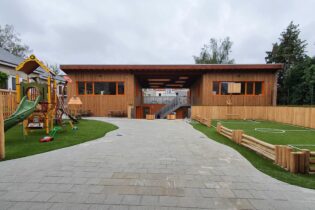KHLIM
Diepenbeek, Belgium, Europe
Construction of a new wing for the department of Commerce and Business Administration KHLim in Diepnbeek (Catholic University College of Limburg Diepenbeek Campus). Energy efficiency plays a major role for the concept design. The new KHLim building is equipped with concrete core activation (CCA) and sub floor heating.
Often, there are large internal heat loads from people, lights, computers, machinery, etc. in a college structure making it necessary to cool the interior. To maintain a comfortable indoor climate, concrete core activation (CCA) is incorporated in the design execution. With this technique integrating water-pipes in concrete slabs/cores, the thermal mass may proceed actively to adjust itself. Since these masses can absorb a lot of energy (heat from the classrooms and offices), the conditions during the summer months are comfortably cool without the effects of annoying drafts. During the winter months, this system becomes the main source of heating functioning like the principle of standard floor heating. In addition, there are standard radiators whereby people can regulate the temperature in various zones, individually and accurately. The generation of energy by means of modulating condensing boilers (heating) and high-performance heat pumps will be coupled to a hybrid cooling tower (cooling).
The new KHLim-building is equipped with a demand-controlled ventilation system. Integrated in the air group is a hygroscopic rotary heat exchanger with an efficiency of 85%. The specific air flow rate depends on the occupancy levels of the various rooms. The control and regulation of the air distribution net is based upon a constant air pressure level, and the flow rates in the different zones by use of simple control elements.
High performance fluorescent lamps and led lighting provide a pleasant adequate lighting in each of the classrooms.
The building is also equipped with a comprehensive system for data and internet, both through numerous fixed connections and a wireless network system. The classrooms are all equipped with wiring to accommodate audio visual presentation teaching devices but also for the future device requirements such as projectors, whiteboards, etc.
















